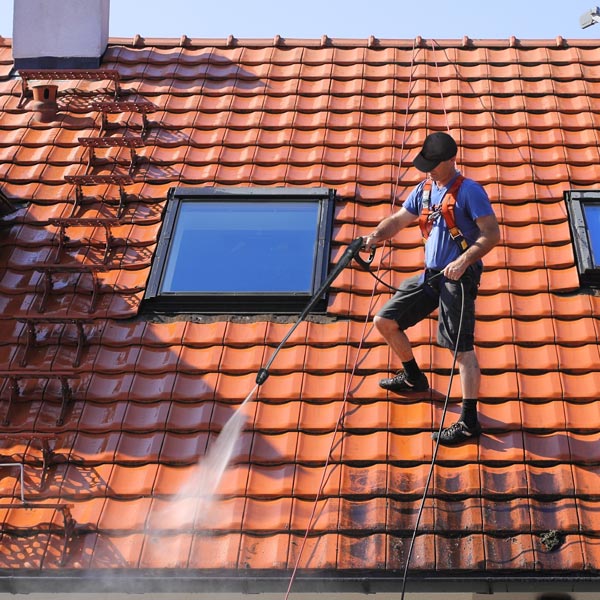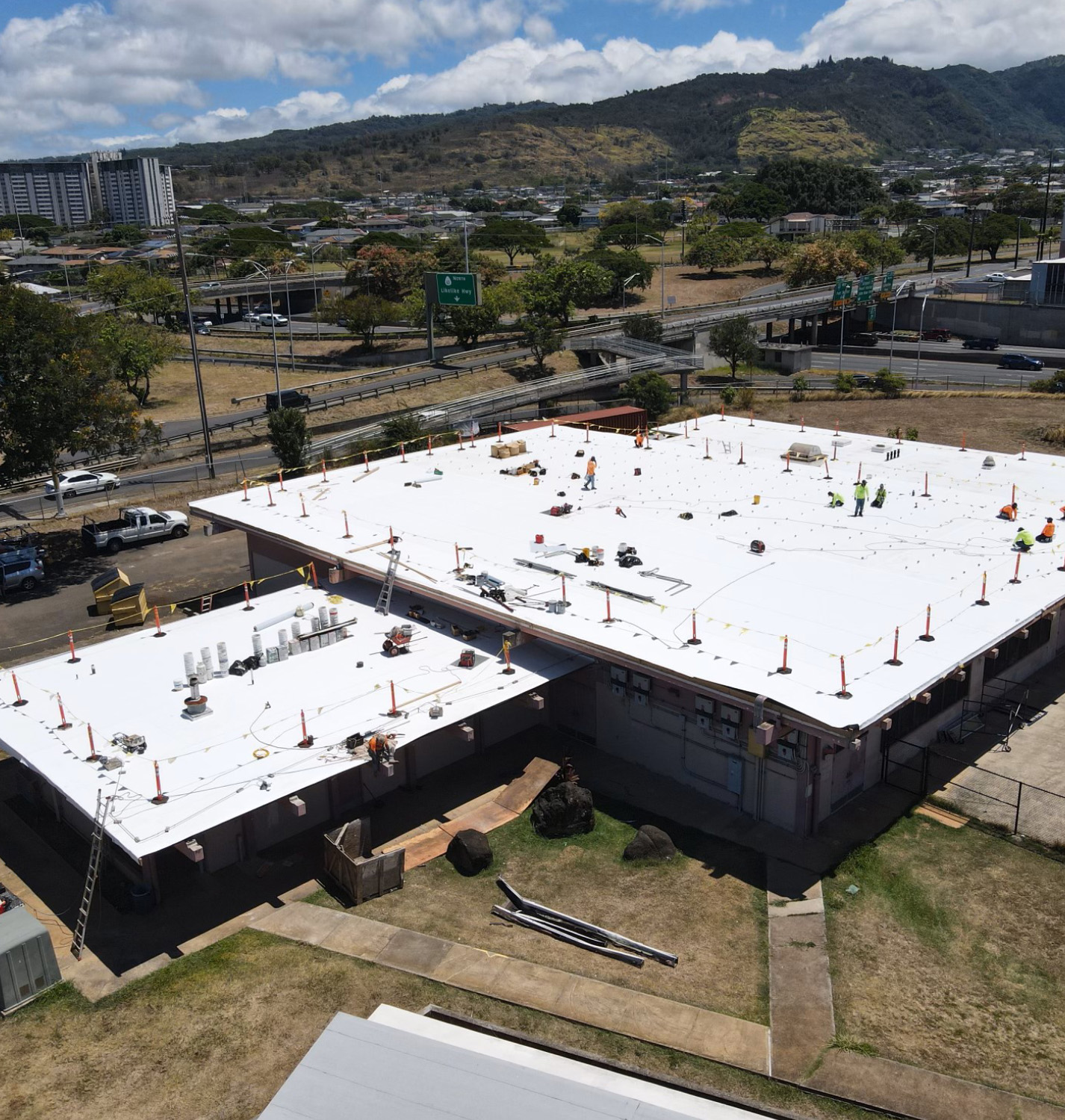The Ultimate List for Roofing System Install: Making Sure High Quality and Longevity
The procedure of mounting a roof needs cautious focus to detail. An extensive list can help assure top quality and longevity throughout the job. From evaluating the existing roof problem to choosing the best materials, each step is necessary. Proper prep work and tools play a crucial duty in attaining an effective setup. Lots of neglect the relevance of final examinations and continuous upkeep. Recognizing these aspects can greatly influence the durability of a new roof covering.
Assessing Your Existing Roof Covering Problem
Exactly how can one efficiently determine the condition of their current roofing? An extensive evaluation is vital for reviewing a roofing's integrity. Property owners ought to begin by analyzing the roof from the ground, looking for visible indicators of wear such as missing roof shingles, drooping areas, or discoloration. Closer assessment can be done by accessing the roof itself, where one need to look for fractured or crinkled shingles and check flashing around vents and chimneys.Additionally, the interior of the home warrants attention; water stains or mold development on ceilings and wall surfaces might suggest leakages. Attic evaluations can disclose potential issues, such as inadequate air flow or signs of moisture.Regular assessments, ideally two times a year, can aid determine problems early and stop costly repairs. By understanding the roofing system's present state, house owners can make enlightened choices about essential maintenance or replacements.
Choosing the Right Roof Covering Materials
When selecting roof covering products, what variables should house owners think about to ensure a long lasting and effective selection? First, the environment plays a substantial function; products should stand up to local climate condition, whether it's heavy rain, snow, or intense sunlight. Next off, the durability of the material is important; choices like metal or slate deal expanded lifespans contrasted to asphalt shingles. Homeowners ought to additionally examine the material's weight, as this can influence the architectural integrity of the home. Additionally, appearances matter; the selected product should enhance the overall building style. Power performance is an additional factor to consider; some materials show warm, decreasing air conditioning prices. Ultimately, budget restraints will determine selections; while some products may have a lower in advance expense, lasting toughness can cause higher cost savings. By weighing these factors, property owners can make enlightened decisions that enhance their roof's top quality and durability.
Planning for Installment
Before the setup process starts, homeowners should assure that their building is properly prepared to suit the new roofing. This prep work involves a number of key actions to assure a smooth and effective setup. House owners must get rid of the area around the home of any type of particles, tools, or furniture that can prevent accessibility for specialists. Additionally, it is necessary to notify neighbors concerning the forthcoming job to lessen interruption and safe cooperation.Next, homeowners need to inspect their existing roofing system and structural elements, dealing with any type of possible problems such as decomposing wood or leakages that can affect the installment. Securing essential permits and sticking to regional structure codes is crucial for compliance and safety and security. Setting up the installment throughout positive weather condition conditions helps prevent hold-ups and warranties that the work proceeds without complications. Correct preparation sets the foundation for an effective roof project, eventually enhancing the long life and effectiveness of the new roofing system.

Essential Tools and Devices
In roof installation, having the right tools and tools is essential for an effective job. This includes essential safety and security equipment, numerous roof covering installation tools, and effective product dealing with devices. Appropriate prep work and option of these products can substantially boost performance and safety and security on duty website.
Safety Gear Requirements
Security gear is a crucial element of any kind of roof installment job, making certain the well-being of employees at elevated heights. Essential security tools includes tough hats, which secure against dropping debris, and safety goggles to protect the eyes from dust and fragments. Non-slip footwear is considerable for keeping hold on steep surface areas, while harnesses and lanyards supply autumn defense, stopping major injuries. Handwear covers help shield hands from sharp products and decrease fatigue throughout extended durations of work. Additionally, high-visibility vests enhance presence, promoting awareness amongst staff member and nearby employees. Making use of ear defense may also be a good idea in loud atmospheres. Generally, sticking to security gear requirements is important for a risk-free and effective roofing installment procedure.

Roofing Installation Tools
Appropriate precaution lay the foundation for an effective roofing job, however having the right tools and devices is similarly crucial. Essential devices for roof covering installment consist of a ladder, allowing risk-free accessibility to the roof, and a roofing nail gun to assure reliable and safe attachment of materials. A chalk line is crucial for marking straight lines, while an energy blade is needed for cutting roof covering products precisely. Additionally, a pry bar help in removing old tiles. Workers ought to also have a level to confirm appropriate alignment and drainage. An excellent pair of job handwear covers protects hands while giving grasp. With each other, these tools help with a smooth roofing process, boosting both high quality and toughness.
Material Handling Tools

A range of product handling equipment is crucial for an effective roofing setup procedure. Equipment such as forklifts, lifts, and dollies facilitate the activity of hefty materials like shingles and underlayment to the work site and onto the roof. Making use of scaffolding and ladders assurances safe accessibility to raised areas while minimizing the danger of injury. Tarpaulins and bins are required for proper storage and company of products, avoiding damages and guaranteeing easy access. Additionally, a crane might be needed for larger roof covering jobs to raise substantial products straight onto the roofing system. Proper training in operation this tools is crucial; it improves process performance and adds to total task security, assuring an effective roof setup.
Step-by-Step Installation Process
The detailed installment procedure is important for an effective roof installation. It starts with preparing the roof surface, complied with by the correct installment of underlayment, and ends with the effective securing of roof materials. Each of these actions plays an essential function in guaranteeing the longevity and performance of the roof.
Prepare the Roof Surface Area
Preparing the roof surface is important for making sure a successful installment of roof materials. This procedure begins with an extensive examination to determine any type of existing damage or debris. Any type of loosened roof shingles, extending nails, or old roofing materials should be removed to produce a tidy, smooth structure. Next off, the roof covering deck must be looked for rot or structural concerns, as these can compromise the stability of the new roofing system. After repair services, a comprehensive cleaning is necessary; this consists of sweeping away dust, leaves, and any various other pollutants that could hinder attachment. Lastly, making sure proper drain and ventilation is crucial, as these variables influence the durability of the roofing. A well-prepared surface establishes the stage for ideal installment and toughness.
Install Underlayment Properly
Setting up underlayment appropriately is basic for improving the total performance of the roof covering system. The process starts with selecting the appropriate underlayment product, which can consist of felt, synthetic, or rubberized choices. Next, verify the roofing surface is tidy and completely dry before laying the underlayment - commercial roofing honolulu. Begin at the most affordable point of the roofing, turning out the underlayment horizontally and overlapping each row by at the very least six inches. It is very important to safeguard the underlayment in position with staples or roof nails, staying clear of gaps or wrinkles that might endanger water resistance. Trim excess material at the edges, assuring a neat coating. This precise installation step is essential for offering an included layer of protection against wetness and boosting resilience
Protect Roof Materials Effectively
After validating the underlayment is properly mounted, the following action involves safeguarding the roofing products properly. The roof contractor should gather all essential products, consisting of tiles, nails, and flashing. Starting at the cheapest point of the roof covering, shingles need to be laid in a staggered pattern, confirming proper overlap to avoid leakages. Each tile should be attached with nails, utilizing the manufacturer's suggested spacing and quantity. It is important to drive nails right, preventing over-penetration, which can compromise the product. Blinking should be installed around chimneys and vents to boost waterproofing. Ultimately, the specialist must perform a thorough examination to validate all products are firmly fastened, as this content this will significantly affect the roof covering's total resilience and longevity.
Carrying Out Final Examinations
Comprehensive final assessments are important to assure that a newly set up roof covering meets all security and quality requirements. This important step entails assessing the entire roof for any type of prospective issues that might occur post-installation. Assessors need to take a look at the placement of roof shingles, ensuring they my site are properly protected and without problems. Flashing and air flow systems need to likewise be reviewed for correct installation and functionality.Additionally, the assessor must inspect gutters and downspouts to validate they are suitably placed to help with water drain. Any type of signs of leakages, misaligned materials, or inadequate sealing around infiltrations need to be addressed promptly. Roofers should also make certain that all debris from the setup process is removed, leaving the site tidy and secure. Performing these detailed assessments aids stop future difficulties, inevitably prolonging the life expectancy of the roofing system and offering property owners with comfort regarding their financial investment.
Preserving Your New Roof
Correct maintenance is essential for ensuring the longevity and performance of a new roofing. Homeowners must conduct normal evaluations a minimum of twice a year, ideally in spring and autumn, to recognize prospective concerns early. Throughout these assessments, they should try to find indicators of damage, such as missing out on tiles, leaks, or debris accumulation, which can restrain drain and promote mold growth.Cleaning seamless gutters and downspouts is necessary, as stopped up systems can lead to water damages and structural issues. In addition, cutting overhanging branches can protect against abrasion and particles buildup on the roofing system surface.It's likewise advisable to schedule specialist inspections every few years to examine the roof covering's problem completely. Keeping records of upkeep activities and repair work can assist track the roofing's performance over time (commercial roofing honolulu). By sticking to a consistent upkeep routine, property owners can secure their investment and ensure their brand-new roof covering continues to be reliable for years to come
Frequently Asked Questions
For how long Does a Normal Roofing Setup Take?
The duration of a regular roofing setup varies based on factors such as roof covering dimension, products, and weather condition conditions. Generally, it can take anywhere from eventually to a number of weeks to complete the installation.
Can I Mount a New Roofing Over an Existing One?
The concern of installing a new roof covering over an existing one often arises. Many home owners consider this choice for cost-effectiveness, but it is vital to review regional building regulations and the architectural stability of the existing roof.
What Allows Are Required for Roof Setup?
Before mounting a roof covering, one have to inspect regional laws. Commonly, building authorizations are needed, in addition to assessments to guarantee conformity with safety and security requirements and zoning laws. Consulting with regional authorities is essential for appropriate guidance.
What Service warranties Are Available for Roof Products?
Different service warranties exist for roof products, usually consisting of producer service warranties covering defects and performance. link In addition, some professionals supply craftsmanship service warranties, ensuring setup top quality. Buyers ought to meticulously assess terms to recognize protection duration and restrictions.
Just How Can Weather Condition Impact the Setup Process?
Climate considerably influences the setup process, as rain, snow, or severe temperatures can delay work, influence material bond, and compromise safety and security. Appropriate preparation and scheduling around weather report are crucial for successful roofing system installment.
 Mara Wilson Then & Now!
Mara Wilson Then & Now! Angus T. Jones Then & Now!
Angus T. Jones Then & Now! Bradley Pierce Then & Now!
Bradley Pierce Then & Now! Suri Cruise Then & Now!
Suri Cruise Then & Now! Erika Eleniak Then & Now!
Erika Eleniak Then & Now!